Popular categories
Looking for a yarn?

100% Cotton
from 2.80 $ /50g
Order DROPS Muskat from Wool Warehouse Direct Ltd
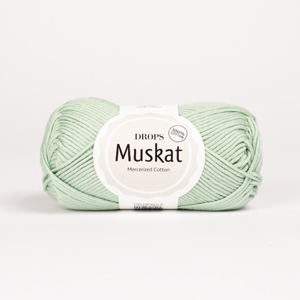
|
DROPS Muskat uni colour 100% Cotton |
2.80 $ /50g |
Order |
Clicking the ORDER button will redirect you to Wool Warehouse Direct Ltd website
Order DROPS Needles & Hooks
Clicking the ORDER button will redirect you to Wool Warehouse Direct Ltd website
The yarn cost is calculated from the pattern’s smallest size and the yarn’s cheapest product type. Looking for an even better price? You might find it on the DROPS Deals!
Green Grove Tee
Knitted sweater with short sleeves in DROPS Muskat or DROPS Cotton Merino. Piece is knitted top down with round yoke and lace pattern. Size: S - XXXL
Change language:
English (US/in)- English (US/in)
- Česky
- Dansk
- Deutsch
- Eesti keel
- English (UK/cm)
- Español
- Français
- Íslenska
- Italiano
- Magyar
- Nederlands
- Norsk
- Polski
- Português
- Suomi
- Svenska
- English (UK/cm), Bulgaria
- English (UK/cm), Croatia
- English (UK/cm), Greece
- English (UK/cm), Latvia
- English (UK/cm), Lithuania
- English (UK/cm), Romania
- English (UK/cm), Slovenia
- Česky, Slovakia
#greengrovetee
DROPS design: Pattern r-805Yarn group B
----------------------------------------------------------
SIZE:
S - M - L - XL - XXL – XXXL
Finished measurements:
Chest measurements: 100-106-116-128-138-146 cm = 39⅜"-41¾"-45¾"-50⅜"-54¼"-57⅜"
Full length: 52-54-56-58-60-62 cm = 20½"-21¼"-22"-22¾"-23⅝"-24⅜"
All measurements in charts are in cm.
YARN:
DROPS MUSKAT from Garnstudio (belongs to yarn group B)
450-500-550-600-650-700 g color 89, light sea green
Or use:
DROPS COTTON MERINO from Garnstudio (belongs to yarn group B)
400-450-500-550-600-650 g color 29, sea green
NEEDLES:
DROPS CIRCULAR NEEDLE SIZE 4 MM = US 6: Length 40 and 80 cm = 16" and 32".
DROPS CIRCULAR NEEDLE SIZE 3 MM = US 2.5: Length 40 and 80 cm = 16" and 32".
DROPS DOUBLE POINTED NEEDLES SIZE 4 MM = US 6
DROPS DOUBLE POINTED NEEDLES SIZE 3 MM = US 2.5
The technique MAGIC LOOP can be used – you then only need circular needle of 80 cm = 32" in each size.
KNITTING GAUGE:
21 stitches in width and 28 rows vertically in stockinette stitch = 10 x 10 cm = 4" x 4".
NOTE! Remember that needle size is only a suggestion. If you have too many stitches on 10 cm = 4" switch to larger needles. If you have too few stitches on 10 cm = 4" switch to smaller needles.
-------------------------------------------------------
Alternative Yarn – See how to change yarns here
Yarn Groups A to F – Use the same pattern and change the yarn here
Yarn usage using an alternative yarn – Use our yarn converter here
-------------------------------------------------------
You might also like...

100% Cotton
from 2.80 $ /50g
Order DROPS Muskat from Wool Warehouse Direct Ltd

|
DROPS Muskat uni colour 100% Cotton 2.80 $ /50g Order |
Clicking the ORDER button will redirect you to Wool Warehouse Direct Ltd website
Order DROPS Needles & Hooks
Clicking the ORDER button will redirect you to Wool Warehouse Direct Ltd website
The yarn cost is calculated from the pattern’s smallest size and the yarn’s cheapest product type. Looking for an even better price? You might find it on the DROPS Deals!
Pattern instructions
EXPLANATION FOR THE PATTERN:
----------------------------------------------------------
INCREASE TIP:
Increase 1 stitch by making 1 yarn over. On next round work yarn over twisted to avoid holes.
PATTERN:
See diagrams A.1 to A.4. Diagrams show all rows in pattern seen from the right side.
DECREASE TIP (applies to sleeves sizes L, XL, XXL and XXXL):
Decrease 1 stitch on each side of marker thread as follows: Work until 3 stitches remain before marker thread, knit 2 together, knit 2 (marker thread is between these 2 stitches), slip 1 stitch knitwise, knit 1, pass slipped stitch over stitch worked (2 stitches decreased).
----------------------------------------------------------
START THE PIECE HERE:
----------------------------------------------------------
SWEATER - SHORT OVERVIEW OF THE PIECE:
Work neck edge and yoke in the round on circular needle from mid back, top down. Now divide yoke for body and sleeves. Work the body in the round on circular needle. Work sleeves in the round on double pointed needles/a short circular needle.
NECK EDGE:
Cast on 122-126-130-136-142-148 stitches on short circular needle size 3 MM = US 2.5 with DROPS Muskat or DROPS Cotton Merino. Knit 1 round. Then work rib (= knit 1/purl 1) for 3 cm = 1⅛".
When rib is done, knit 1 round while at the same time increasing 36-38-40-44-48-52 stitches evenly - read INCREASE TIP = 158-164-170-180-190-200 stitches. Insert 1 marker in middle of round. Measure yoke from this marker.
YOKE:
Switch to circular needle size 4 MM = US 6. Work A.1 in the round on yoke. When A.1 has been worked, continue in stockinette stitch in the round. REMEMBER THE KNITTING GAUGE!
When piece measures 4-4-5-5-6-6 cm = 1½"-1½"-2"-2"-2⅜"-2⅜" from marker, increase 40-44-50-56-60-64 stitches evenly – remember INCREASE TIP = 198-208-220-236-250-264 stitches.
When piece measures 7-7-8-8-9-10 cm = 2¾"-2¾"-3⅛"-3⅛"-3½"-4" from marker, work A.2 in the round on yoke. NOTE! On 11th round in diagram displace beginning of round 2 stitches to the right to make the pattern fit the entire round. Then begin next round as before.
AT THE SAME TIME on every round marked with arrow in diagram increase evenly as follows:
Arrow-1: Increase 42-44-50-58-62-66 stitches evenly = 240-252-270-294-312-330 stitches (there is now room for 40-42-45-49-52-55 repetitions of A.2 in the round on yoke).
Arrow-2: Increase 38-42-48-56-58-58 stitches evenly = 278-294-318-350-370-388 stitches.
When A.2 has been worked, work A.3 in the round on yoke. AT THE SAME TIME on every round marked with arrow increase evenly as follows:
Arrow-3: Increase 32-36-42-50-50-52 stitches evenly = 310-330-360-400-420-440 stitches.
When A.3 has been worked, work A.4 in the round on yoke. When A.4 has been worked in your size, work in stockinette stitch but note that in some sizes divide the body and sleeves as explained below, before A.4 is done.
DIVIDING FOR BODY AND SLEEVES:
When piece measures 17-18-20-21-23-25 cm = 6¾"-7"-8"-8¼"-9"-9¾" from marker, divide yoke for body and sleeves. If A.4 is not done in your size, finish A.4 on body and sleeves.
Work 47-51-55-61-65-69 stitches as before (half back piece), slip the next 60-64-70-78-80-82 stitches on a thread for sleeve, cast on 10-10-12-12-14-16 new stitches on needle (in the side under sleeve), work 95-101-110-122-130-138 stitches in stockinette stitch (front piece), slip the next 60-64-70-78-80-82 stitches on a thread for sleeve, cast on 10-10-12-12-14-16 new stitches on needle (in the side under sleeve), and work the last 48-50-55-61-65-69 stitches as before (half back piece). Finish body and sleeves separately. Now measure piece from here.
BODY:
= 210-222-244-268-288-308 stitches. If A.4 is not done on yoke in your size, finish A.4 (the pattern will not fit mid under each sleeve, but make sure that pattern is continued correctly over stitches from yoke and work pattern as far as possible in towards each side under sleeves, work the remaining stitches in stockinette stitch).
When A.4 has been worked, continue in stockinette stitch.
When 6-6½-7-7-7½-7½ cm = 2⅜"-2½"-2¾"-2¾"-2⅞"-2⅞" in stockinette stitch have been worked after A.4, work A.3 in the round on body.
When A.3 has been worked, work in stockinette stitch for 6-6½-7-7-7½-7½ cm = 2⅜"-2½"-2¾"-2¾"-2⅞"-2⅞". Then work A.3 in the round on body again. When A.3 has been worked, continue in stockinette stitch.
When piece measures 25-26-26-27-27-27 cm = 9¾"-10¼"-10¼"-10⅝"-10⅝"-10⅝" from division, knit 1 round while increasing 20-22-22-26-28-30 stitches evenly = 230-244-266-294-316-338 stitches.
Switch to circular needle size 3 MM = US 2.5. Work rib (knit 1/purl 1) for 4 cm = 1½". Loosely bind off. Sweater measures approx. 52-54-56-58-60-62 cm = 20½"-21¼"-22"-22¾"-23⅝"-24⅜" from shoulder.
SLEEVES:
Slip the 60-64-70-78-80-82 stitches from thread in one side of piece on double pointed needles or a short circular needle size 4 MM = US 6 and pick in addition up 1 stitch in each of the 10-10-12-12-14-16 stitches cast on under sleeve = 70-74-82-90-94-98 stitches.
Insert 1 marker thread mid under sleeve (in the middle of the 10-10-12-12-14-16 stitches).
Begin round at marker thread. If A.4 is not done on yoke in your size, finish A.4 (the pattern will not fit mid under sleeve, but make sure that pattern is continued correctly over stitches from yoke and work pattern as far as possible towards mid under sleeves, work the remaining stitches in stockinette stitch).
When A.4 has been worked, continue in stockinette stitch in the round.
In size L, XL and XXXL decrease stitches mid under sleeve as explained below (in S and M no stitches are decreased).
SIZE L, XL, XXL AND XXXL:
When sleeve measures 4-3-3-2 cm = 1½"-1⅛"-1⅛"-¾" from division, decrease 2 stitches mid under sleeve - read DECREASE TIP. Decrease like this every 4-3-3-2 cm = 1½"-1⅛"-1⅛"-¾" 2-3-3-3 times in total = 78-84-88-92 stitches.
ALL SIZES:
When sleeve measures 14-14-12-11-10-8 cm = 5½"-5½"-4¾"-4⅜"-4"-3⅛" from division, knit 1 round while decreasing 4-6-8-10-10-10 stitches evenly = 66-68-70-74-78-82 stitches.
Switch to double pointed needles size 3 MM = US 2.5. Work rib (knit 1/purl 1) for 4 cm = 1½". Loosely bind off. Sleeve measures approx. 18-18-16-16-14-12 cm = 7"-7"-6¼"-6¼"-5½"-4¾" from division. Work the other sleeve the same way.
Diagram
All measurements in charts are in cm.

|
= knit |

|
= purl |

|
= between 2 stitches make 1 yarn over |

|
= knit 2 together |

|
= slip 1 stitch knitwise, knit 1, pass slipped stitch over stitch worked |

|
= slip 1 stitch knitwise, knit 2 stitches together, pass slipped stitch over stitches worked together |

|
= increase round |


What can you do with our patterns? You can share DROPS patterns online, using the pattern original picture, materials, name and number. But you are NOT ALLOWED to reproduce the complete pattern digitally in any way. Yarn stores are welcome to use the DROPS pattern database to promote the sale of our assortment. You can print out our patterns, make as many copies as you’d like. The only thing we ask is that you don't make any changes / additions to the original printed document. And that the patterns according to the DROPS philosophy are given out to the consumers for free. Editorials that wish to publish our patterns in printed books or magazines can contact us for more information. The sale of garments based on DROPS patterns is permitted as long as they are sold as single items or per order. Further commercial use of the patterns is not permitted. It has to be clearly stated that the garment is made based on a design from DROPS DESIGN. The use of clothing labels of which DROPS DESIGN forms part is conditioned by the inclusion of the following text: “A DROPS DESIGN made by …..”. The use of DROPS photos for marketing purposes/sales is only permitted in connection with the use/sale of DROPS products. The photos may not be cut or edited and the logo should be clearly visible.
We reserve the right to withdraw the permission for use of our patterns at any time, notwithstanding the reason.
Each of our patterns has specific tutorial videos to help you.
These step-by-step tutorials might also help you:
Why is the knitting/crochet tension so important?
Knitting tension is what determines the final measurements of your work, and is usually measured per 10 x 10 cm. It is provided like so: number of stitches in width x number of rows in height - eg: 19 stitches x 26 rows = 10 x 10 cm.
The knitting tension is very individual; some people knit/crochet loosely while others work tightly. You adjust the knitting tension with the needle size, which is why the suggested needle size only serve as a guide! You need to adjust this (up or down) to ensure that YOUR knitting tension matches the knitting tension provided in the pattern. If you work with a different knitting tension than provided you will have a different yarn consumption, and your work will have different measurements than what the pattern suggests.
The knitting tension also determines which yarns can replace each other. As long as you achieve the same knitting tension you can replace one yarn with another.
See DROPS lesson: How to measure your tension/gauge
See DROPS video: How to make a gauge tension swatch
How do I know how many balls of yarn I need?
The required amount of yarn is provided in grams, eg: 450 g. To calculate how many balls you’ll need you first need to know how many grams are in 1 ball (25g, 50g or 100g). This information is available if you click on the individual yarn quality on our pages. Divide the amount required with the amount of each ball. For example, if each ball is 50g (the most common amount), the calculation will be as follows: 450 / 50 = 9 balls.
Can I use a different yarn than what the pattern suggests?
The important thing when changing from one yarn to another is that the knitting/crochet tension remains the same. This is so that the measurements of the finished piece will be the same as on the sketch provided. It is easier to achieve the same knitting tension using yarns from the same yarn group. It is also possible to work with multiple strands of a thinner yarn to achieve the knitting tension of a thicker one. Please try our yarn converter. We recommend you to always work a test swatch.
Please NOTE: when changing yarn the garment might have a different look and feel to the garment in the photo, due to individual properties and qualities of each yarn.
See DROPS lesson: Can I use a different yarn than the one mentioned in the pattern?
What are the yarn groups?
All our yarns are categorised into yarn groups (from A to F) according to thickness and knitting tension – group A contains the thinnest yarns and group F the thickest. This makes it easier for you to find alternative yarns to our patterns, should you wish to switch yarn. All yarns within the same group have a similar knitting tension and can easily replace each other. However, different yarn qualities have different structures and properties which will give the finished work a unique look and feel.
How do I use the yarn converter?
At the top of all our patterns you’ll find a link to our yarn converter, which is a helpful tool should you wish to use a different yarn than suggested. By filling in the yarn quality you wish to replace, the amount (in your size) and number of strands, the converter will present good alternative yarns with the same knitting tension. Additionally it will tell you how much you’ll require in the new qualities and whether you’ll need to work with multiple strands. Most skeins are 50g (some are 25g or 100g).
If the pattern is worked with multiple colours, every colour will have to be converted separately. Similarly, if the pattern is worked with several strands of different yarns (for example 1 strand Alpaca and 1 strand Kid-Silk) you will have to find alternatives for each, individually.
Why do you show discontinued yarns in the patterns?
Since different yarns have different qualities and textures we have chosen to keep the original yarn in our patterns. However, you can easily find options among our available qualities by using our yarn converter, or simply pick a yarn from the same yarn group.
It is possible that some retailers still have discontinued yarns in stock, or that someone has a few skeins at home that they would like to find patterns for.
The yarn converter will provide both alternative yarn as well as required amount in the new quality.
What size should I knit?
If you think it's hard to decide what size to make, it can be a good idea to measure a garment you own already and like the size of. Then you can pick the size by comparing those measures with the ones available in the pattern's size chart.
You'll find the size chart at the bottom of the pattern.
See DROPS lesson: How to read size chart
Why do I get the wrong knitting tension with the suggested needle size?
The needle size provided in the pattern serves only as a guide, the important thing is to follow the knitting tension. And since knitting tension is very individual, you will have to adjust the needle size to ensure that YOUR tension is the same as in the pattern – maybe you’ll have to adjust 1, or even 2 needle sizes, up or down to achieve the correct tension. For this, we recommend that you work test swatches.
Should you work with a different knitting tension than the one provided, the measurements of the finished garment might deviate from the measurement sketch.
See DROPS lesson: How to measure your tension/gauge
See DROPS video: How to make a gauge tension swatch
Why is the pattern worked top-down?
Working a garment top-down provides more flexibility and room for personal adjustment. For example it is easier to try the garment on while working, as well as making adjustments to length of yoke and shoulder caps.
The instructions are carefully explaining every step, in the correct order. Diagrams are adjusted to the knitting direction and are worked as usual.
How do I work according to a knitting diagram?
The diagram depicts all rows/rounds, and every stitch seen from the right side. It is read from bottom to top, from right to left. 1 square = 1 stitch.
When working back and forth, every other row is worked from the right side and every other row is worked from the wrong side. When working from the wrong side, the diagram will have to be worked reversed: from left to right, knit stitches are purled, purl stitches are knit etc.
When working in the round every round is worked from the right side and the diagram are worked from right to left on all rounds.
See DROPS lesson: How to read knitting diagrams
How do I work according to a crochet diagram?
The diagram depicts all rows/rounds, and every stitch seen from the right side. It is worked from bottom to top, from right to left.
When working back and forth every other row is worked from the right side: from right to left and every other row is worked from the wrong side: from left to right.
When working in the round, every row in the diagram are worked from the right side, from right to left.
When working a circular diagram you start in the middle and work your way outwards, counter clockwise, row by row.
The rows usually start with a given number of chain stitches (equivalent to the height of the following stitch), this will either be depicted in the diagram or explained in the pattern.
See DROPS lesson: How to read crochet diagrams
How do I work several diagrams simultaneously on the same row/round?
Instructions for working several diagrams after each other on the same row/round, will often be written like so: “work A.1, A.2, A.3 a total of 0-0-2-3-4 times". This means you work A.1 once, then A.2 is worked once, and A.3 is repeated (in width) the number of times provided for your size – in this case like so: S = 0 times, M = 0 times, L=2 times, XL= 3 times and XXL = 4 times.
The diagrams are worked as usual: begin with the first row in A.1, then work the first row in A.2 etc.
See DROPS lesson: How to read knitting diagrams
See DROPS lesson: How to read crochet diagrams
Why are the sleeves shorter in larger sizes?
The total width of the garment (from wrist-to-wrist) will be larger in the larger sizes, despite the actual sleeves being shorter. The larger sizes have longer sleeve caps and wider shoulders, so there will be a good fit in all sizes.
Where on the garment is the length measured?
The measurement sketch/schematic drawing provides information regarding the full length of the garment. If it’s a jumper or a jacket the length is measured from the highest point on the shoulder (usually closest to the neckline), and straight down to the bottom of the garment. It is NOT measured from the tip of shoulder. Similarly, the length of yoke is measured from the highest point on the shoulder and down to where yoke is split into body and sleeves.
See DROPS lesson: How to read a schematic drawing
What is a repeat?
Diagrams are often repeated on the round or in height. 1 repeat is the diagram the way it appears in the pattern. If it says to work 5 repeats of A.1 in the round, then you work A.1 a total of 5 times after/next to each other in the round. If it says to work 2 repeats of A.1 vertically/in height you work the entire diagram once, then begin again at the start and work the entire diagram one more time.
Why does the piece start with more chain stitches than it’s worked with?
Chain stitches are slightly narrower than other stitches and to avoid working the cast-on edge too tight, we simply chain more stitches to begin with. The stitch count will be adjusted on the following row to fit the pattern and measurement sketch.
Why increase before the rib edge when the piece is worked top-down?
The rib edge is more elastic and will contract slightly compared to, for example, stocking stitch. By increasing before the rib edge, you avoid a visible difference in width between the rib edge and the rest of the body.
Why increase in the cast-off edge?
It’s very easy to cast off too tightly, and by making yarn overs while casting off (and simultaneously casting these off) you avoid a too tight cast off edge.
See DROPS video: How to bind off with yarn overs (yo)
How do I increase/decrease on every 3rd and 4th row/round alternately?
To achieve an even increase (or decrease) you can increase on, for example: every 3rd and 4th row alternately, like so: work 2 rows and increase on the 3rd row, work 3 rows and increase on the 4th. Repeat this until the increase is complete.
See DROPS lesson: Increase or decrease 1 st on every 3rd and 4th row alternately
How can I work a jacket in the round instead of back and forth?
Should you prefer to work in the round instead of back and forth, you may of course adjust the pattern. You’ll need to add steeks mid-front (usually 5 stitches), and follow the instructions. When you would normally turn and work from the wrong side, simply work across the steek and continue in the round. At the end you’ll cut the piece open, pick up stitches to work bands, and cover the cut edges.
See DROPS video: How to knit steeks and cut open
Can I work a jumper back and forth instead of in the round?
Should you prefer to work back and forth instead of in the round, you may of course adjust the pattern so you work the pieces separately and then assemble them at the end. Divide the stitches for the body in 2, add 1 edge stitch in each side (for sewing) and work the front and back pieces separately.
See DROPS lesson: Can I adapt a pattern for circular needles into straight needles?
Why is the pattern slightly different than what I see in the photo?
Pattern repeats can vary slightly in the different sizes, in order to get the correct proportions. If you’re not working the exact same size as the garment in the photo, yours might deviate slightly. This has been carefully developed and adjusted so that the complete impression of the garment is the same in all sizes.
Make sure to follow instructions and diagrams for your size!
How do I make a women’s size garment into a men’s size one?
If you have found a pattern you like which is available in women’s size it’s not very difficult to convert it to men’s size. The biggest difference will be the length of sleeves and body. Start working on the women size that you think would fit across the chest. The additional length will be worked right before you cast off for the armhole/sleeve cap. If the pattern is worked top-down you can add the length right after the armhole or before the first decrease on sleeve.
Regarding additional yarn amount, this will depend on how much length you add, but it is better with a skein too many than too few.
How do I prevent a hairy garment from shedding?
All yarns will have excess fibres (from production) that might come off as lint or shedding. Brushed yarns (ie hairier yarns) have more of these loose, excess fibres, causing more shedding.
Shedding also depends on what is worn under or over the garment, and whether this pulls at the yarn fibres. It’s therefore not possible to guarantee that there will be no shedding
Below are some tips on how to get the best result when working with hairier yarns:
1. When the garment is finished (before you wash it) shake it vigorously so the looser hairs come off. NOTE: do NOT use a lint roller, brush or any method that pulls at the yarn.
2. Place the garment in a plastic bag and put it in your freezer - the temperature will cause the fibres to become less attached to each other, and excess fibres will come off easier.
3. Leave in the freezer for a few hours before taking it out and shaking it again.
4. Wash the garment according to the instructions on the yarn label.
Why does my garment pill?
Pilling is a natural process that happens to even the most exclusive of fibers. It's a natural sign of wear and tear that is hard to avoid, and that is most visible in high friction areas of your garment like a sweater's arms and cuffs.
You can make your garment look as new by removing the pilling, using a fabric comb or a pill/lint remover.
In the meantime, you can read the questions and answers that others have left to this pattern or join the DROPS Workshop on Facebook to get help from fellow knitters/crocheters!
Green Grove Tee
Green Grove Tee
Green Grove Tee |
||||||||||||||||||||||
 |
 |
|||||||||||||||||||||
Knitted sweater with short sleeves in DROPS Muskat or DROPS Cotton Merino. Piece is knitted top down with round yoke and lace pattern. Size: S - XXXL
DROPS 239-26 |
||||||||||||||||||||||
|
---------------------------------------------------------- EXPLANATION FOR THE PATTERN: ---------------------------------------------------------- INCREASE TIP: Increase 1 stitch by making 1 yarn over. On next round work yarn over twisted to avoid holes. PATTERN: See diagrams A.1 to A.4. Diagrams show all rows in pattern seen from the right side. DECREASE TIP (applies to sleeves sizes L, XL, XXL and XXXL): Decrease 1 stitch on each side of marker thread as follows: Work until 3 stitches remain before marker thread, knit 2 together, knit 2 (marker thread is between these 2 stitches), slip 1 stitch knitwise, knit 1, pass slipped stitch over stitch worked (2 stitches decreased). ---------------------------------------------------------- START THE PIECE HERE: ---------------------------------------------------------- SWEATER - SHORT OVERVIEW OF THE PIECE: Work neck edge and yoke in the round on circular needle from mid back, top down. Now divide yoke for body and sleeves. Work the body in the round on circular needle. Work sleeves in the round on double pointed needles/a short circular needle. NECK EDGE: Cast on 122-126-130-136-142-148 stitches on short circular needle size 3 MM = US 2.5 with DROPS Muskat or DROPS Cotton Merino. Knit 1 round. Then work rib (= knit 1/purl 1) for 3 cm = 1⅛". When rib is done, knit 1 round while at the same time increasing 36-38-40-44-48-52 stitches evenly - read INCREASE TIP = 158-164-170-180-190-200 stitches. Insert 1 marker in middle of round. Measure yoke from this marker. YOKE: Switch to circular needle size 4 MM = US 6. Work A.1 in the round on yoke. When A.1 has been worked, continue in stockinette stitch in the round. REMEMBER THE KNITTING GAUGE! When piece measures 4-4-5-5-6-6 cm = 1½"-1½"-2"-2"-2⅜"-2⅜" from marker, increase 40-44-50-56-60-64 stitches evenly – remember INCREASE TIP = 198-208-220-236-250-264 stitches. When piece measures 7-7-8-8-9-10 cm = 2¾"-2¾"-3⅛"-3⅛"-3½"-4" from marker, work A.2 in the round on yoke. NOTE! On 11th round in diagram displace beginning of round 2 stitches to the right to make the pattern fit the entire round. Then begin next round as before. AT THE SAME TIME on every round marked with arrow in diagram increase evenly as follows: Arrow-1: Increase 42-44-50-58-62-66 stitches evenly = 240-252-270-294-312-330 stitches (there is now room for 40-42-45-49-52-55 repetitions of A.2 in the round on yoke). Arrow-2: Increase 38-42-48-56-58-58 stitches evenly = 278-294-318-350-370-388 stitches. When A.2 has been worked, work A.3 in the round on yoke. AT THE SAME TIME on every round marked with arrow increase evenly as follows: Arrow-3: Increase 32-36-42-50-50-52 stitches evenly = 310-330-360-400-420-440 stitches. When A.3 has been worked, work A.4 in the round on yoke. When A.4 has been worked in your size, work in stockinette stitch but note that in some sizes divide the body and sleeves as explained below, before A.4 is done. DIVIDING FOR BODY AND SLEEVES: When piece measures 17-18-20-21-23-25 cm = 6¾"-7"-8"-8¼"-9"-9¾" from marker, divide yoke for body and sleeves. If A.4 is not done in your size, finish A.4 on body and sleeves. Work 47-51-55-61-65-69 stitches as before (half back piece), slip the next 60-64-70-78-80-82 stitches on a thread for sleeve, cast on 10-10-12-12-14-16 new stitches on needle (in the side under sleeve), work 95-101-110-122-130-138 stitches in stockinette stitch (front piece), slip the next 60-64-70-78-80-82 stitches on a thread for sleeve, cast on 10-10-12-12-14-16 new stitches on needle (in the side under sleeve), and work the last 48-50-55-61-65-69 stitches as before (half back piece). Finish body and sleeves separately. Now measure piece from here. BODY: = 210-222-244-268-288-308 stitches. If A.4 is not done on yoke in your size, finish A.4 (the pattern will not fit mid under each sleeve, but make sure that pattern is continued correctly over stitches from yoke and work pattern as far as possible in towards each side under sleeves, work the remaining stitches in stockinette stitch). When A.4 has been worked, continue in stockinette stitch. When 6-6½-7-7-7½-7½ cm = 2⅜"-2½"-2¾"-2¾"-2⅞"-2⅞" in stockinette stitch have been worked after A.4, work A.3 in the round on body. When A.3 has been worked, work in stockinette stitch for 6-6½-7-7-7½-7½ cm = 2⅜"-2½"-2¾"-2¾"-2⅞"-2⅞". Then work A.3 in the round on body again. When A.3 has been worked, continue in stockinette stitch. When piece measures 25-26-26-27-27-27 cm = 9¾"-10¼"-10¼"-10⅝"-10⅝"-10⅝" from division, knit 1 round while increasing 20-22-22-26-28-30 stitches evenly = 230-244-266-294-316-338 stitches. Switch to circular needle size 3 MM = US 2.5. Work rib (knit 1/purl 1) for 4 cm = 1½". Loosely bind off. Sweater measures approx. 52-54-56-58-60-62 cm = 20½"-21¼"-22"-22¾"-23⅝"-24⅜" from shoulder. SLEEVES: Slip the 60-64-70-78-80-82 stitches from thread in one side of piece on double pointed needles or a short circular needle size 4 MM = US 6 and pick in addition up 1 stitch in each of the 10-10-12-12-14-16 stitches cast on under sleeve = 70-74-82-90-94-98 stitches. Insert 1 marker thread mid under sleeve (in the middle of the 10-10-12-12-14-16 stitches). Begin round at marker thread. If A.4 is not done on yoke in your size, finish A.4 (the pattern will not fit mid under sleeve, but make sure that pattern is continued correctly over stitches from yoke and work pattern as far as possible towards mid under sleeves, work the remaining stitches in stockinette stitch). When A.4 has been worked, continue in stockinette stitch in the round. In size L, XL and XXXL decrease stitches mid under sleeve as explained below (in S and M no stitches are decreased). SIZE L, XL, XXL AND XXXL: When sleeve measures 4-3-3-2 cm = 1½"-1⅛"-1⅛"-¾" from division, decrease 2 stitches mid under sleeve - read DECREASE TIP. Decrease like this every 4-3-3-2 cm = 1½"-1⅛"-1⅛"-¾" 2-3-3-3 times in total = 78-84-88-92 stitches. ALL SIZES: When sleeve measures 14-14-12-11-10-8 cm = 5½"-5½"-4¾"-4⅜"-4"-3⅛" from division, knit 1 round while decreasing 4-6-8-10-10-10 stitches evenly = 66-68-70-74-78-82 stitches. Switch to double pointed needles size 3 MM = US 2.5. Work rib (knit 1/purl 1) for 4 cm = 1½". Loosely bind off. Sleeve measures approx. 18-18-16-16-14-12 cm = 7"-7"-6¼"-6¼"-5½"-4¾" from division. Work the other sleeve the same way. |
||||||||||||||||||||||
Diagram explanations |
||||||||||||||||||||||
|
||||||||||||||||||||||

|
||||||||||||||||||||||

|
||||||||||||||||||||||
|
Have you made this or any other of our designs? Tag your pictures in social media with #dropsdesign so we can see them! Do you need help with this pattern?You'll find tutorial videos, a Comments/Questions area and more by visiting the pattern on garnstudio.com. © 1982-2024 DROPS Design A/S. We reserve all rights. This document, including all its sub-sections, has copyrights. Read more about what you can do with our patterns at the bottom of each pattern on our site. |
||||||||||||||||||||||
With over 40 years in knitting and crochet design, DROPS Design offers one of the most extensive collections of free patterns on the internet - translated to 17 languages. As of today we count 309 catalogs and 11624 patterns - 11615 of which are translated into English (US/in).
We work hard to bring you the best knitting and crochet have to offer, inspiration and advice as well as great quality yarns at incredible prices! Would you like to use our patterns for other than personal use? You can read what you are allowed to do in the Copyright text at the bottom of all our patterns. Happy crafting!









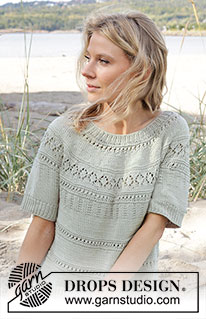






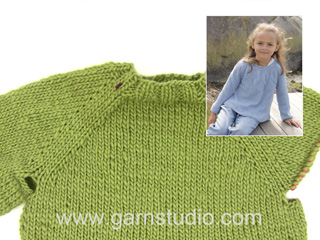
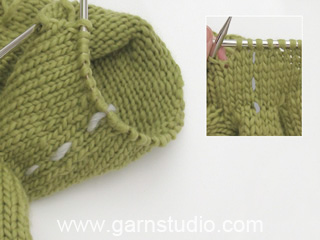


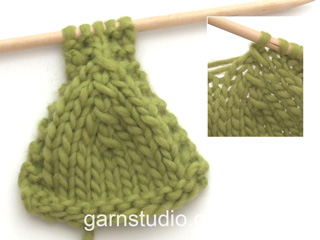



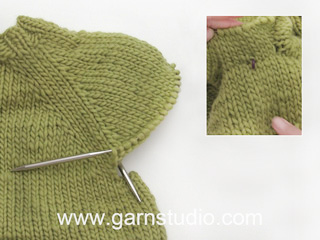

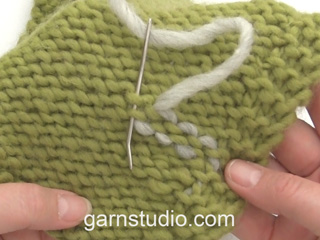
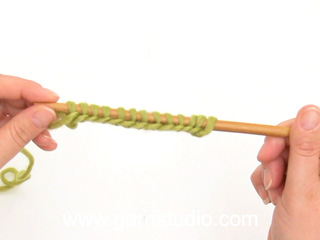
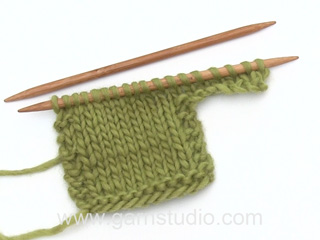
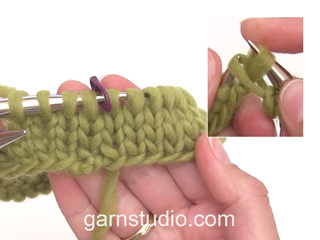
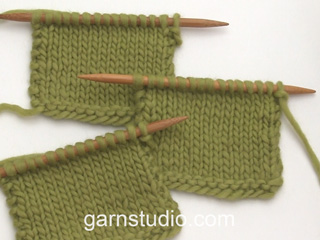


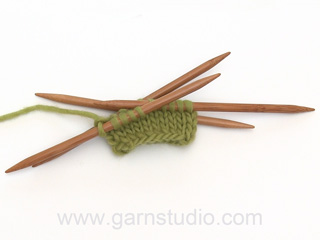
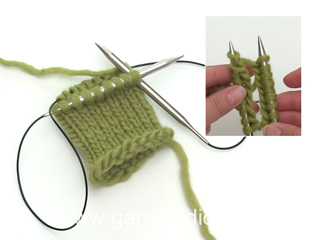

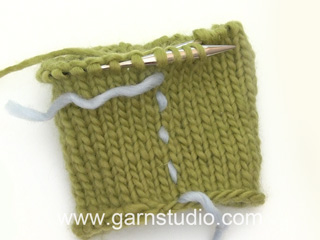





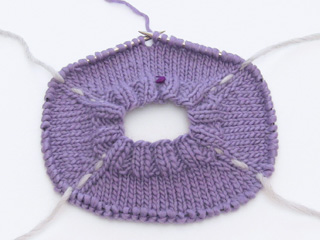




















Comments / Questions (28)
Hi I just finished A-2 and it did not work out to look like a diamond. I notice on the pattern from the largest part of the diamond there are 2 sets of holes and after centre there is only one. Can you please help and explain what I am doing wrong. Row 11 I understand how to do it. Thank you
11.08.2024 - 00:37DROPS Design answered:
Dear Debbie, as you can see in the picture, the pattern is displaced in the 11th row. So the yarn overs are not one over the other, forming a diamond, but connecting the left edge of the previous diamond and the right edge of the current diamond. To match the pattern the beginning of the round is moved 2 stitches backwards. "NOTE! On 11th round in diagram displace beginning of round 2 stitches to the right to make the pattern fit the entire round." Happy knitting!
12.08.2024 - 00:41I'm still confused on row 11 in chart A2. I understand when you say to start this row with the last 2 stitches on your left needle. If you work the last 2 stitches in first A2 together with the first stitch in next A2, isn't that a decrease? what exactly do you mean?
29.07.2024 - 23:54DROPS Design answered:
Dear Mrs Hillbrands, you are right, that's a decrease but as you make 1 yarn over on each side of this decrease, the number of stitches remain the same, at the beg of the round, starting 2 sts before end of the round the new first 2 sts will be the first yarn over + the stitch remaining from the decrease and the 2nd yarn over after the decrease is now the first stitch A.2. Happy knitting!
30.07.2024 - 08:42I have a question about the A1 graph. I've done a screenshot but can't attach it! It's the '0 with the left to right upward sloping line' (something like this 0/). It doesn't appear in the Diagrem Explanation! What does it stand for?
13.07.2024 - 17:26DROPS Design answered:
Dear Jenny, these are 2 symbols that are described separately in the Diagrem Explanation: / = knit 2 together, 0 = between 2 stitches make 1 yarn over. So you need to do these 2 actions in close succession. Happy knitting!
14.07.2024 - 13:39Hallo, ich stricke zum 1x nach einer Drops Anleitung, ich soll Maschen zunehmen 142:48=2,958 soll ich auf 3 Maschen aufrunden? Mfg
01.07.2024 - 18:06DROPS Design answered:
Liebe Heidi, ja genau, 02.07.2024 - 09:52
Hi, I have a question about the directions for the body of this pattern. It says: when piece measures 25-26-26-27-27-from division, knit 1 round while increasing 20-22-22-26-28-30 stitches evenly = 230-244-266-294-316-338 stitches.' Should this really be increase? Usually the transition from the body to the ribbing is decrease. It doesn't appear from the photo that the ribbing band is bigger than the body. Thank you
24.03.2024 - 17:34DROPS Design answered:
Dear Marion, yes, it IS an increase. We do this, because ribbing tends to pull in the fabric rather strongly, causing it to look bunched up. By increasin stitches, we can avoid that. Happy Knitting!
24.03.2024 - 19:13Ærme str. L: 70 masker + 12 = 82 så står der tag to m ind 3 gange = 6 masker det giver 76 masker, men opskriften siger 88, så skal der tages 6 m ud til 88 eller passer det med 76 m? Derefter skal der tages 8 m jævnt ind til 70 m? Det kan ikke lade sig gøre!!
09.03.2024 - 11:04DROPS Design answered:
Hei Jane. Du skal felle 2 masker midt under ermet 2 ganger (husk at beskrivelsen til str. S og M ikke er med i denne tallrekken (det felles ikke i str. S og M), slik at da blir 1. tall str. L). Da blir det i str. L: 70 + 12 = 82, fell 2 masker 2 ganger = 82 - 4 = 78 masker. mvh DROPS Design
18.03.2024 - 10:17Buongiorno, è possibile usare il Belle oppure cambia la consistenza del modello? Grazie
05.03.2024 - 17:00DROPS Design answered:
Buonasera Cristina, può lavorare con DROPS Belle se il campione corrisponde a quello indicato. Buon lavoro!
05.03.2024 - 22:13Sorry, habe den Denkfehler meinerseits gefunden. Danke, dass ihr uns immer mit Rat zur Seite steht.
23.01.2024 - 11:55Habe Schwierigkeiten mit der Abnahme am Ärmel. Laut Beschreibung habe ich 82 Maschen auf der Nadel und soll nun 3x 2 Maschen abnehmen, was 88 Maschen ergeben soll. Das ergibt rechnerisch keinen Sinn! Ich stricke die Größe L
23.01.2024 - 11:04DROPS Design answered:
Liebe Frau Stein, in L sind es nur noch 78 Maschen (bei diesem Absatz ist Größe L die erste). Es wird 2 Mal abgenommen: 82 Maschen - 4 M = 78 Maschen übrig. Viel Spaß beim stricken!
24.01.2024 - 07:48I am currently working on the Green Grove Tee. Drops 239-26. I am stuck on the yoke chart A2 round 11 "Displace beginning of round 2 stitches to the right". Please could you help
11.08.2023 - 12:29DROPS Design answered:
Dear Mrs Smith, start this round when 2 stitches of the end of previous round are left on left needle, then work diagram as shown, then work the last 2 sts in first A.2 together with the first stitch next A.2, and continue like this to the end of the round. Happy knitting!
11.08.2023 - 15:27